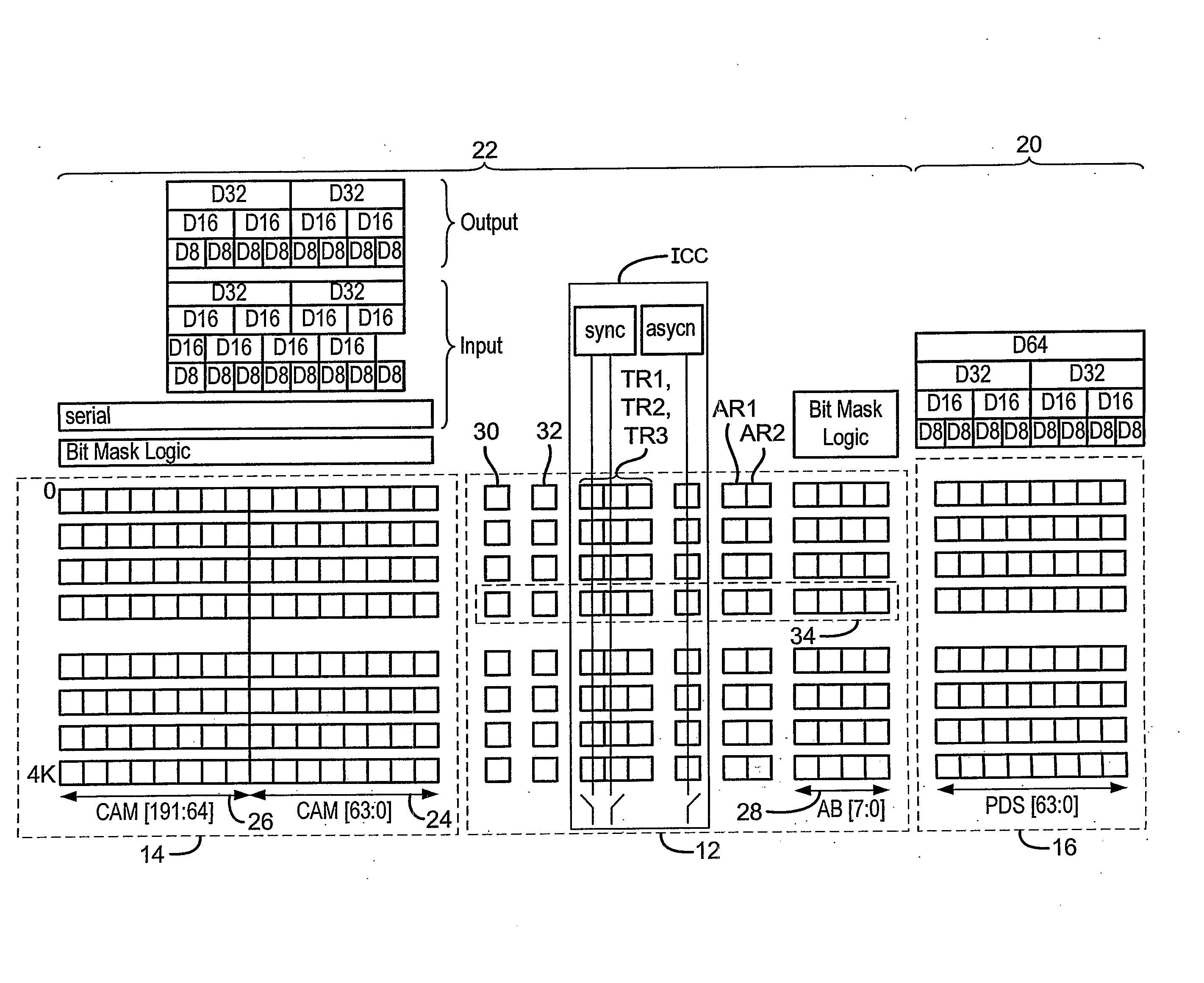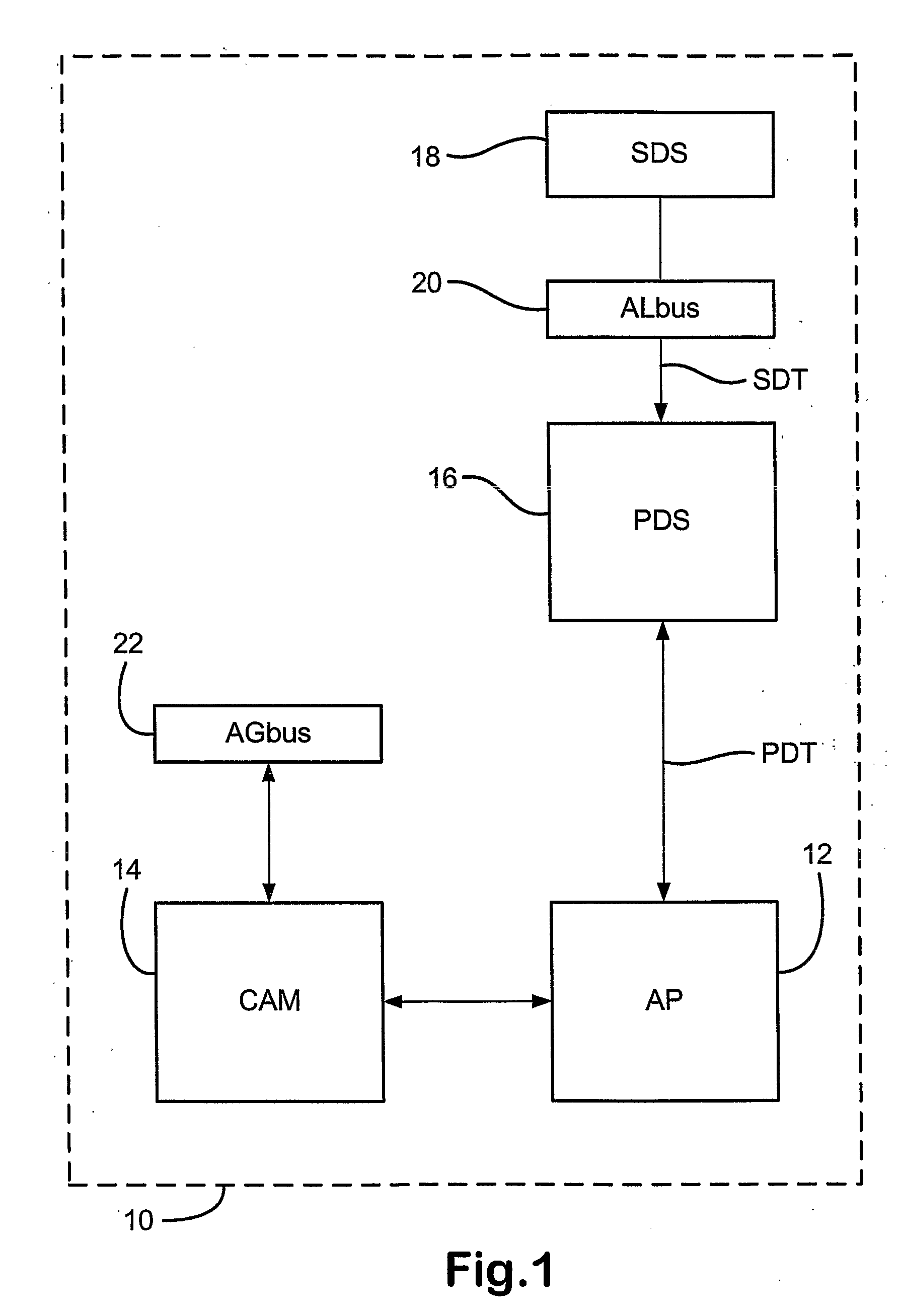Orthogonal Data Memory
- Summary
- Abstract
- Description
- Claims
- Application Information
AI Technical Summary
Benefits of technology
Problems solved by technology
Method used
Image
Examples
Embodiment Construction
[0033]Referring to FIG. 1, there is shown an apparatus 10 for implementing presently preferred embodiments of the present invention. The apparatus 10 comprises an Associative Processor array 12 which interfaces with a Content Addressable Memory 14 and a Primary Data Store 16.
[0034]The Associative Processor array 12 is a programmable, homogeneous and fault-tolerant SIMD parallel processor incorporating a string of identical processing units (referred to hereinafter as associative processing elements or APEs), a software-programmable intercommunication network, and a vector data buffer for fully-overlapped data I / O (not shown). At the physical level, the Associative Processor 12 is implemented as a bit-serial, word-parallel associative parallel processor in that all the APEs can simultaneously perform the same arithmetic, logical or relational operation in a bit-serial manner. The architecture of the Associative Processor 12 will be described in further detail later.
[0035]The Content ...
PUM
 Login to View More
Login to View More Abstract
Description
Claims
Application Information
 Login to View More
Login to View More - R&D
- Intellectual Property
- Life Sciences
- Materials
- Tech Scout
- Unparalleled Data Quality
- Higher Quality Content
- 60% Fewer Hallucinations
Browse by: Latest US Patents, China's latest patents, Technical Efficacy Thesaurus, Application Domain, Technology Topic, Popular Technical Reports.
© 2025 PatSnap. All rights reserved.Legal|Privacy policy|Modern Slavery Act Transparency Statement|Sitemap|About US| Contact US: help@patsnap.com



